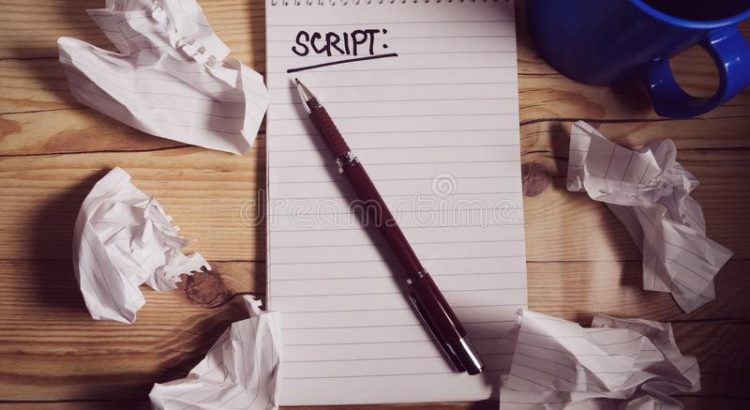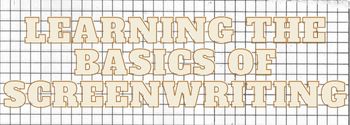A documentary film is a nonfiction motion picture that records real events. It may be a historical record or it may present contemporary issues. A documentary film is different from a newsreel, which is a short motion picture that records factual events, and from a feature film, which is a dramatic motion picture with a story that is fictional.
The first step in writing a documentary script is to select a topic. The topic may be a historical event, a current event, or a person or group of people. Once the topic is selected, the writer must gather information about the topic. This information may come from books, articles, interviews, or the Internet.
The next step is to develop a story line or outline. The story line should be logical and well organized. It should also be interesting to the viewer. The writer should then write a first draft of the script. The first draft should be revised and edited several times before it is finalized.
The final step is to submit the documentary script to a producer. The producer will review the script and may make suggestions for changes. If the producer likes the script, he or she will green light the project and the documentary will be made.
How do you write a documentary script sample?
A documentary script is a written account of the events and information that will be shown in a documentary. It is important to create a well-written and detailed script, as this will ensure that the documentary is both interesting and informative.
There are a few key things to keep in mind when writing a documentary script:
– Start by outlining the main points that you want to cover in the documentary.
– Make sure that your script is well-organized and easy to follow.
– Be sure to include plenty of factual information, as well as quotes and interviews from experts in the field.
– Write in a clear and concise manner, and avoid using too much jargon.
– Proofread your script carefully to ensure that there are no mistakes.
Here is an example of a documentary script:
Opening Credits:
In the following documentary, we will be exploring the history of the American presidency. We will be looking at the successes and failures of past presidents, and examining the challenges that they faced while in office.
Introduction:
The American presidency is one of the most important and powerful positions in the world. Over the years, the role of the president has changed and evolved, and the challenges they face have become increasingly complex.
Segment 1: The Early Years
In this segment, we will be looking at the early years of the American presidency. We will be examining the role of the president in the early days of the United States, and exploring the challenges that they faced during this time.
Segment 2: The Civil War
The American Civil War was a pivotal moment in the history of the United States. In this segment, we will be exploring the role of the president during the Civil War, and examining the decisions that they made during this time.
Segment 3: The Modern Era
In the modern era, the role of the president has changed dramatically. In this segment, we will be looking at the challenges that presidents face in the modern world, and examining the ways in which they have adapted to these changes.
What are the 5 elements of a documentary?
A documentary is a non-fiction film that captures real-life events on camera. It can be a recording of a historical event, a depiction of everyday life, or a portrait of a person or a place.
There are five essential elements that make up a documentary:
1. Storytelling
A documentary must have a story to tell. It can be a factual story based on real-life events, or it can be a fictional story that is based on real-life events.
2. Narration
A documentary must have narration to help tell the story. The narration can be spoken by a voice-over artist, or it can be spoken by the people who are featured in the documentary.
3. Interviews
Interviews are a key element of a documentary. They help provide insight into the story and the people who are featured in the documentary.
4. Footage
Footage is a key element of a documentary. It helps to capture the events that are taking place and to provide a visual representation of the story.
5. Music
Music is often used in documentaries to help set the mood and to convey the emotions of the story.
What are the features of a documentary script?
When it comes to documentaries, the script is king.
A documentary script is a detailed plan for the production of a documentary film. It includes a description of all the footage that will be shot, as well as a treatment of the story that will be told.
The script is written by the documentary’s director, and it serves as a blueprint for the entire production. It’s important to get the script right, because the documentary will be based on it.
There are a few key features that all good documentary scripts have.
First, they must be well-researched. A documentary script should be based on a strong factual foundation, and all the facts should be carefully checked.
Second, they should be well-structured. The story should be easy to follow, and the narrative should be clear and concise.
Third, they should be well-written. The language should be clear and engaging, and it should be easy to read.
Fourth, they should be well-paced. The documentary should move at a brisk pace, and never feel slow or boring.
And finally, they should be well-edited. The script should be polished and error-free.
A good documentary script is essential for a successful documentary. It’s the blueprint that the entire production is based on, and if it’s done well, the documentary will be good as well.
How long should a documentary script be?
When it comes to documentary films, the length of the script can vary greatly. Some documentaries are only a few minutes long, while others can be feature-length films. There is no one answer to the question of how long a documentary script should be, as it depends on a variety of factors, including the topic of the documentary, the amount of footage that is shot, and the amount of time that is needed to tell the story effectively.
That said, there are some general guidelines that can help you determine the length of your documentary script. If your documentary is focused on a specific event or topic, your script should be no longer than the length of the event or topic itself. For example, if you are making a documentary about the history of the Titanic, your script should not be longer than the length of the Titanic voyage.
If your documentary is more of a character-driven story, your script should be around 30 to 60 minutes long. This gives the audience enough time to get to know the characters and to understand their story. Any longer than 60 minutes, and the audience may start to lose interest.
If your documentary is more of a historical or factual film, your script can be longer, depending on the scope of the topic. However, it is generally recommended that your script not be longer than 2 hours, as most people will not want to watch a longer documentary.
When writing your documentary script, be sure to keep these general guidelines in mind. However, always remember that the most important thing is to tell the story effectively and to keep the audience engaged. So if your script is a little longer or shorter than these guidelines, that’s okay. As long as the story is well-told, the length of the script won’t matter.
What is the format of a documentary?
A documentary film is a non-fiction motion picture that typically chronicles important events and personalities. The format of a documentary typically includes voice-over narration, archival footage, and interviews.
What are the examples of documentary?
Documentary filmmaking refers to the process of creating documentary films. It is a form of filmmaking that often uses non-fiction and factual footage to tell a story. Documentaries are typically different from features and other fictional films in that they are often journalistic in nature, meaning that they are based on real events and people.
There are a number of different types of documentaries, but some of the most common include the observational documentary, the interview documentary, and the historical documentary.
The observational documentary is a type of documentary that focuses on capturing real-life events as they unfold. This type of documentary typically does not include interviews with the subjects, and instead relies on footage that is captured by the filmmaker.
The interview documentary is a type of documentary that typically includes interviews with the subjects of the film. This type of documentary is often used to tell the story of a person or group of people, and relies heavily on interviews with those people to tell the story.
The historical documentary is a type of documentary that tells the story of a historical event or period of time. This type of documentary often includes archival footage and interviews with people who were involved in the event or period of time that is being documented.
What is the elements of documentary?
What is a documentary?
The documentary has been around for centuries in one form or another. The word documentary is derived from the French word documentaire, which means to document. The documentary is a nonfiction film that portrays real people and events.
What are the elements of a documentary?
There are many different elements that make up a documentary. The most important element is the story.
The story should be well-told and engaging. The filmmaker must also be able to capture great footage and find interesting characters to follow. The editing process is also critical in shaping the final product. Music and narration can also be important elements in a documentary.
What are the 5 types of documentary?
Documentaries are a type of film that can be factual or fictional. They are often used to explore real-life events and issues. There are five main types of documentary:
1. News documentary
This type of documentary is based on real-world news events. It usually features footage of the event itself, as well as interviews with people who were involved. News documentaries are often shown on TV news programmes.
2. Historical documentary
This type of documentary tells the story of a particular event or period in history. It often uses archive footage and interviews with experts to tell the story.
3. Biographical documentary
This type of documentary tells the story of a real person’s life. It often includes interviews with the person’s friends and family.
4. Environmental documentary
This type of documentary explores the relationship between humans and the environment. It often looks at the impact that humans have had on the environment, and the ways in which we can protect it.
5. Creative documentary
This type of documentary is not based on real-world events. Instead, it explores a creative idea or concept. It might tell the story of a fictional character or event, or it might be a documentary essay that explores a topical issue.
What are the 6 modes of documentary?
There are six modes of documentary:
1. Expository documentary 2. Historical documentary 3. Biographical documentary 4. Investigative documentary 5. Observational documentary 6. Experimental documentary
What are some of the features of a documentary?
A documentary is a nonfiction film that typically captures real-life events and presents them in a factual, objective, and informative manner. Although the definition of a documentary is relatively straightforward, the genre is incredibly diverse and can encompass a wide range of styles and storytelling techniques.
Some of the most common features of a documentary include the use of real footage and interviews, a focus on factual information, and a lack of narration or scripted scenes. Documentaries often seek to provide an in-depth look at a specific topic or event, and they often strive to be impartial and unbiased in their presentation of information.
Some of the most acclaimed documentaries of all time include classics like ‘The Thin Blue Line’ and ‘The Battle of Algiers,’ as well as more recent films like ‘The Cove’ and ‘Inside Job.’ These films vary greatly in terms of style and subject matter, but they all share the common traits of being factual, informative, and unbiased.
What should be included in a documentary script?
A documentary script should include the who, what, where, when, and why of the story. It should also include the story’s tone and point of view.


